The
Mediterranean house gecko (
Hemidactylus turcicus) is a type of
house gecko common to the Mediterranean which has spread to many parts of the world. It is commonly referred to as the
Turkish gecko[1] as represented in its Latin name and also as the
moon lizard because it emerges in the evening
[citation needed].
A study in Portugal found
H. turcicus to be totally nocturnal, with the highest activity peak around 2 am.
[2] They are
insectivorous,
rarely exceeding 15 centimetres (5.9 in) in length, have large, lidless
eyes with elliptical pupils, and purple - or tan-colored skin with
black spots, often with stripes on the tail. Their bellies or undersides
are somewhat translucent. It is currently unknown what impact the
geckos have on native wildlife in the countries they have invaded.
[3]
In many parts of the world the range of
H. turcicus is increasing,
[1]
and unlike many other reptiles, they appear to be highly resistant to
pesticides. The increase may be explained as a consequence of having few
predators in places where they have been introduced, and also of their
tendency to take shelter in the cracks and unseen areas of human homes,
for example inside walls. Reliance on human habitation has thus
contributed to their proliferation, similar to
rodents. In some Eastern Mediterranean countries such as
Turkey and
Cyprus it is a
taboo to harm them due to their benign nature and they are often kept as house pets.

Description
Scan of the ventral side of a Mediterranean house gecko, showing good detail of skin and toepads.
A young Mediterranean house gecko in the process of
moulting.
Snout rounded, about as long as the distance between the eye and the
ear-opening, 1.25 to 1.3 the diameter of the orbit; forehead slightly
concave; ear-opening oval, oblique, nearly half the diameter of the eye.
Body and limbs moderate. Digits variable in length, the inner always
well developed; 6 to 8
lamellae
under the inner digits, 8 to 10 under the fourth finger, and 9 to 11
under the fourth toe. Head with large granules anteriorly, posteriorly
with minute granules intermixed with round tubercles. Rostrum
four-sided, not twice as broad as deep, with medial cleft above; nostril
pierced between the rostrum, the first labial, and three nasals; 7 to
10 upper and 6 to 8 lower labials; mental large, triangular, at least
twice as long as the adjacent labials, its point between two large
chin-shields, which may be in contact behind it; a smaller chin shield
on each side of the larger pair. Upper surface of body covered with
minute granules intermixed with large tubercles, generally larger than
the spaces between them, suboval, trihedral, and arranged in 14 or 16
pretty, regular longitudinal series. Abdominal scales small, smooth,
roundish-hexagonal, imbricate. Males with a short angular series of 4 to
10 (exceptionally 2) preanal pores. Tail cylindrical, slightly
depressed, tapering, covered above with minute scales and transverse
series of large keeled tubercles, beneath with a series of large
transversely dilated plates. Light brown or grayish above, spotted with
darker; many of the tubercles white, lower surfaces white.
[4]
They may be completely translucent except for the spotting. Some are
darker. They often seek darkness when fleeing. They may be seen
singularly or in a group ranging from 2 to 5 together.

Geographic distribution
Gecko being handled by a human
Native to the Mediterranean region, the "med gecko" is one of the
most successful species of geckos in the world. It has spread over much
of the world and established stable populations far from its origins; it
holds no threatened or endangered status. It can be found in countries
with Mediterranean climates
[5] such as Portugal, Spain, France, Italy (including
Lampedusa island,
Elba),
Israel,
Albania,
Greece,
Malta,
North Macedonia, coastal
Croatia (except western Istria), Czech Republic (only warm parts of
Moravia and
Czech Silesia),
Bosnia and Herzegovina, Adriatic islands, coastal Montenegro, coastal part of Albania,
Cyprus,
Turkey, northern
Morocco,
Algeria,
Tunisia,
Jordan,
Syria,
Libya,
Egypt,
Lebanon, northern
Yemen (Socotra Archipelago),
Somalia,
Eritrea,
Kenya, southern
Iran,
Iraq,
Oman,
Qatar,
Pakistan, India,
Balearic Islands (Island Addaya Grande),
Canary Islands (introduced to
Gran Canaria and
Tenerife),
Panama,
Puerto Rico,
Belize, Mexico (
Baja California,
Chihuahua,
Durango,
Nuevo León,
Yucatán; introduced),
Cuba (introduced).
[citation needed] It has also been introduced to the southern USA (
Louisiana,
Alabama,
Texas,
Arizona,
Florida,
California,
[5] Arkansas,
Mississippi,
South Carolina,
Georgia,
Oklahoma,
Virginia,
Maryland,
Nevada,
New Mexico,
Kansas,
Tennessee,
North Carolina,
Utah, and
Missouri).
[citation needed] It can also be occasionally found as far north as Ohio.
[citation needed]

Behaviour

Mediterranean
house geckoes emit a distinctive, high-pitched call somewhat like a
squeak or the chirp of a bird, possibly expressing a territorial
message.
They are voracious predators on moths and small roaches, and are
attracted to outdoor lights in search of these prey. They are also
attracted by the call of a male decorated cricket (
Gryllodes supplicans)
even though the males are usually safely out of reach in a burrow,
because female crickets attracted to the male's call can be intercepted
and eaten.
[6]
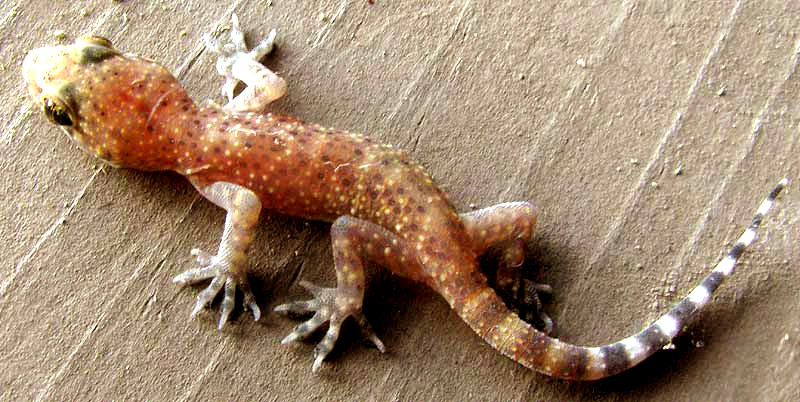
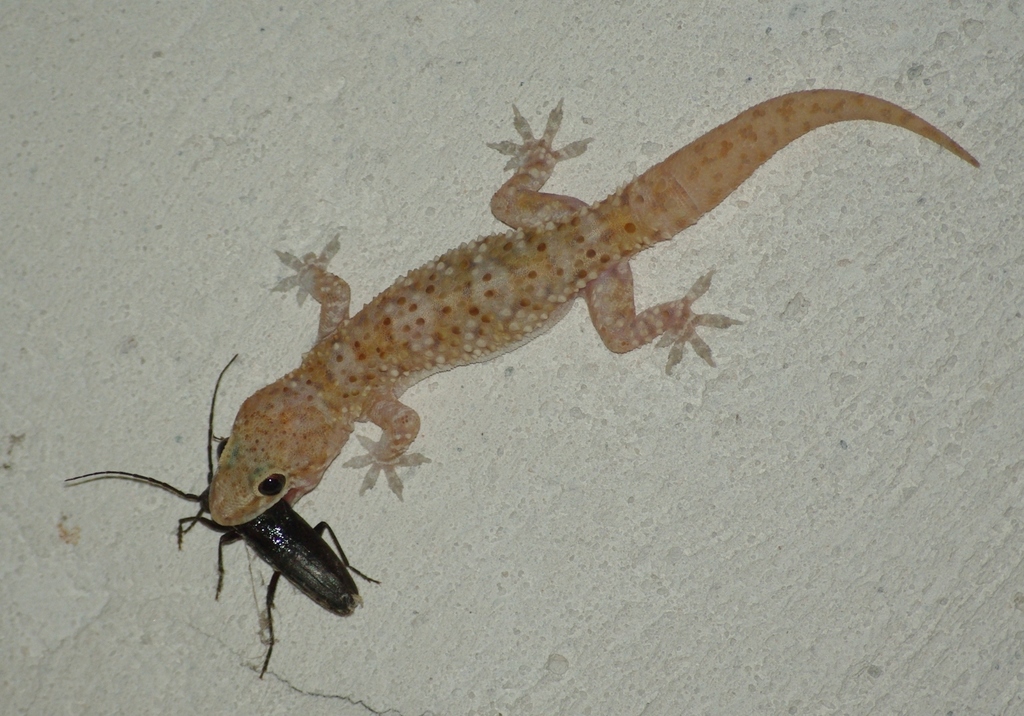
Hemidactylus turcicus
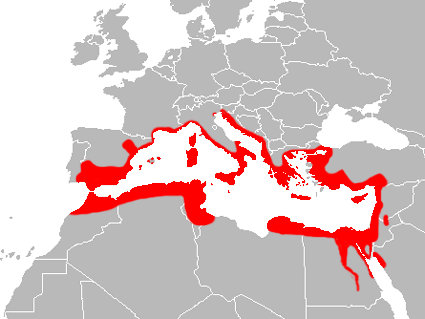


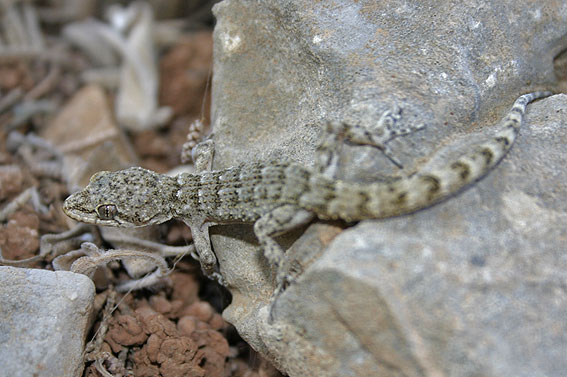
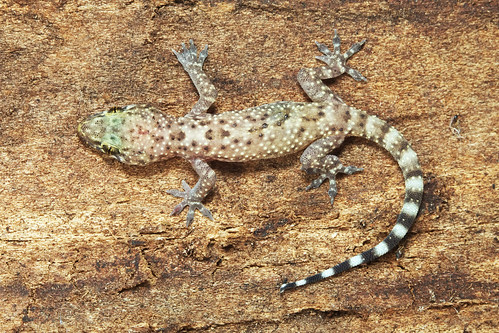


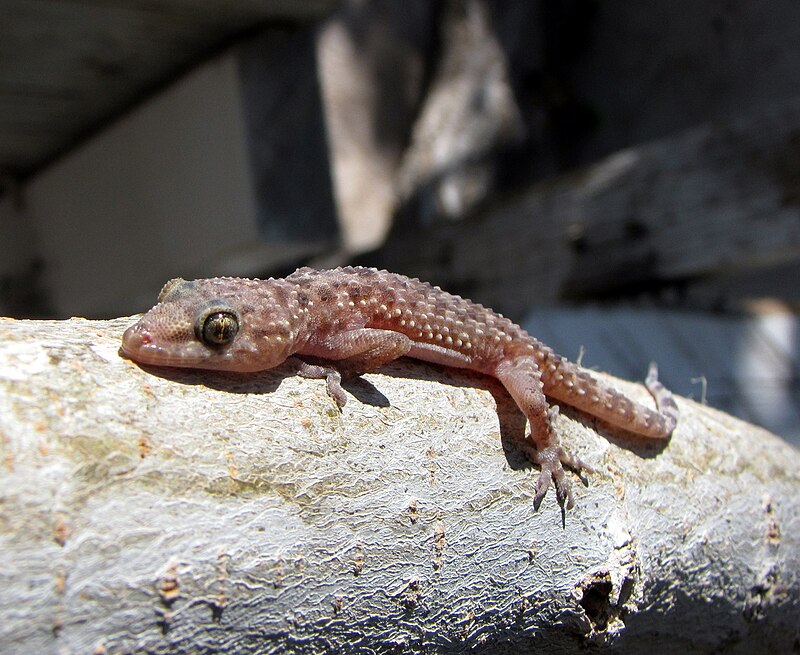














No comments:
Post a Comment
Note: Only a member of this blog may post a comment.